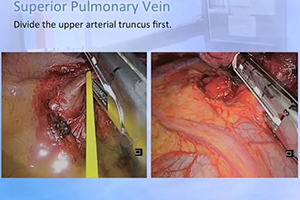Uniportal thoracoscopic surgery: from medical thoracoscopy to non-intubated uniportal video-assisted major pulmonary resections
Abstract
The development of thoracoscopy has more than one hundred years of history since Jacobaeus described the first procedure in 1910. He used the thoracoscope to lyse adhesions in tuberculosis patients. This technique was adopted throughout Europe in the early decades of the 20th century for minor and diagnostic procedures. It is only in the last two decades that interest in minimally invasive thoracic surgery was reintroduced by two key technological improvements: the development of better thoracoscopic cameras and the availability of endoscopic linear mechanical staplers. From these advances the first video-assisted thoracic surgery (VATS) major pulmonary resection was performed in 1992. In the following years, the progress of VATS was slow until studies showing clear benefits of VATS over open surgery started to be published. From that point on, the technique spread throughout the world and variations of the technique started to emerge. The information available on internet, live surgery events and experimental courses has contributed to the rapid learning of minimally invasive surgery during the last decade. While initially slow to catch on, the traditional multi-port approach has evolved into a uniportal approach that mimics open surgical vantage points while utilizing a non-rib-spreading single small incision. The early period of uniportal VATS development was focused on minor procedures until 2010 with the adoption of the technique for major pulmonary resections. Currently, experts in the technique are able to use uniportal VATS to encompass the most complex procedures such as bronchial sleeve, vascular reconstructions or carinal resections. In contrast, non-intubated and awake thoracic surgery techniques, described since the early history of thoracic surgery, peaked in the decades before the invention of the double lumen endotracheal tube and have failed to gain widespread acceptance following their re-emergence over a decade ago thanks to the improvements in VATS techniques.
Cover






